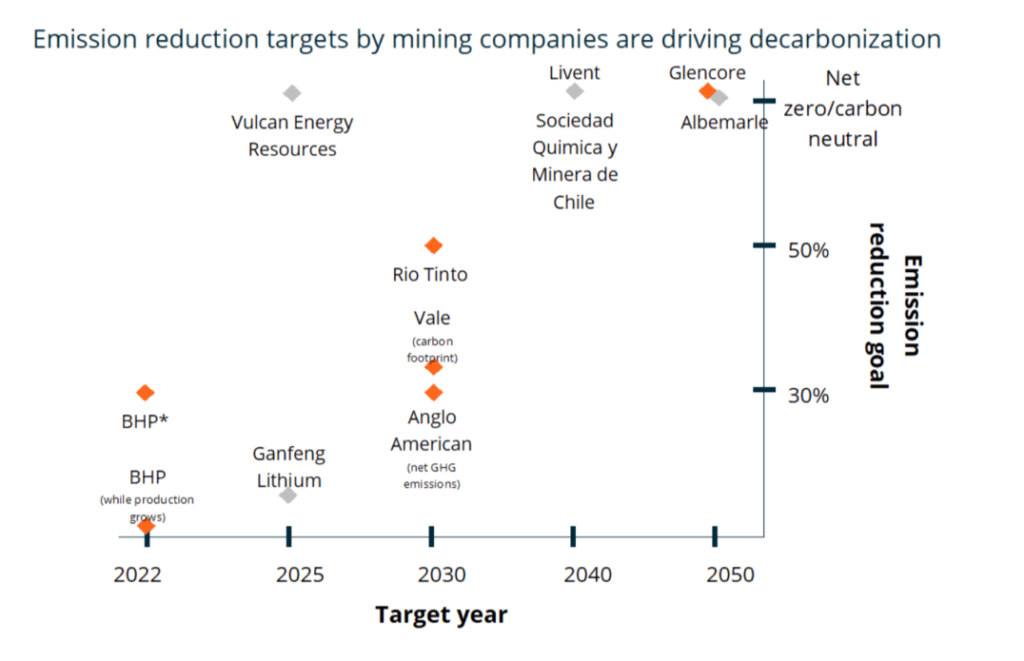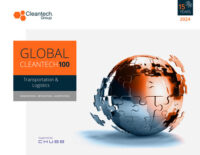Decarbonizing Off-Road Vehicles: An Emerging Challenge and Opportunity to Reach Net-Zero Emissions
Decarbonization of on-road transportation, including cars, buses and trucks, is well underway, with electric alternatives not only widely available but reaching 9% of all passenger car sales in 2021.
Another sector of transportation is much farther behind in electrifying and will become a larger piece of the emissions pie as emissions from on-road vehicles fall. That sector is off-road vehicles, equipment and machinery used in construction, mining, agriculture and ports.
Off-road vehicles and equipment are major contributors to pollution, accounting for almost three-quarters of fine particulate matter (PM) and one-qua of nitrogen oxides (NOx) emitted from mobile sources in the U.S., and one-quarter of PM and >15% of NOx in Europe.
Emissions standards and in-use compliance for off-road vehicles and equipment lags heavy-duty on-road trucks and passenger cars, and there are some key differences that will making reducing emissions from off-road vehicles different than on-road vehicles:
- Off-road vehicles and equipment include a wide range of sizes, weight and functions and are characterized by low volume and decentralized, creating barriers to bring down costs through economies of scale and meet required functionality.
- Off-road industries, particularly ports and construction sites, are more sensitive to air quality and pollution concerns than CO2 emissions, as ports and construction sites are often located near urban centers and disadvantaged communities. Existing emissions regulations target PM and NOx emission, rather than CO2.
- Due to higher costs of low- and zero-emission equipment, lack of regulatory pull for most industries, and infrastructure challenges, demand for innovation in the off-road sector is low.
Agriculture
Low- and zero-emission agriculture equipment, mainly tractors, is in very early stages of deployment. Incumbent equipment manufacturers, such as John Deere and Agco, have launched electric tractors in recent years, and electric tractor startups, such as Solectrac and Monarch tractor, have emerged. Hobby farms and small commercial farms with a sustainability-focused brand and sustainability-conscious consumers that are willing to pay a premium for products produced with green practices are driving demand for electric equipment. Because of the higher upfront cost of electric tractors, large commercial farms will need regulations and/or subsidies to stimulate demand.
In addition to a higher purchase cost of the tractors themselves, charging infrastructure is one of the main barriers to deploying electric equipment. Farms are generally not large users of electricity and often located in rural areas, making it expensive and difficult to build out electric infrastructure for charging.
Construction
Although construction and agriculture have many similarities, such as overlapping machinery and components manufacturers, the construction sector has made more strides in electrifying equipment. One key driver for this is that while farms are generally located in rural areas, construction sites are often located closer to population centers, where the noise and pollution is concentrated into a smaller space and impacts more people directly. Municipalities looking to reduce the noise, pollution and emissions from construction are currently driving electrification efforts. For example, 40 cities around the world have signed on to the C40 Clean Construction Declaration, which calls for procuring and, when possible, using only zero-emission construction machinery from 2025 onwards. Some cities, like Oslo, have already created zero-emission construction zones.
Charging infrastructure is also a major challenge for electric construction equipment. Construction sites are generally temporary and can be space constrained, making it difficult to invest in on-site charging and fueling infrastructure. Another major challenge is getting sufficient electricity to a site, as construction is largely reliant on diesel-powered generators.
Mining
Growing demand for critical minerals and metals and supply chain transparency initiatives have led to mining coming under increased scrutiny to reduce emissions. Many major mining companies have made commitments to reduce emissions through 2050. Low-emission industries such as renewable energy and electric vehicles depend heavily on rare earth metals, and Life-Cycle Assessments (LCAs) of these technologies has created more demand to decarbonize the entire supply chain.
However, mines have long lives, long-term supply contracts and depend on reliability and predictability. Thus, mining companies traditionally have been conservative in adopting new technology.

Ports
Maritime ports are seeing increasing uptake of low- and zero-emission cargo handling equipment, particularly for smaller equipment like terminal tractors. Procurement mandates, regulations and subsidies like the California Air Resources Board’s (CARB) plan to transition existing cargo handling equipment regulation to zero emissions are driving the market. In addition, corporate commitments to net-zero emissions in Scope 1, 2 and 3 activities are also driving decarbonization. Logistics contracts must meet the needs of corporations who are committing to net-zero operations and are looking to reduce emissions throughout their supply chain. Another driver is e-commerce growth and port expansion. Massive growth in home deliveries during the pandemic will likely continue, leading to port expansion and increased emissions at ports. Due to proximity to urban areas, port growth is prompting environmental and emission reduction initiatives to avoid community pushback and adverse health effects of increasing emissions.
Innovation
Emissions reduction regulations and demand for zero-emission equipment in off-road industries lags on-road industries. However, zero-emission solutions from incumbents in off-road industries are also lagging on-road industries, creating an opportunity for innovators to gain an early movers’ advantage in the coming years as demand increases for zero-emissions equipment.
Gridtractor is a California-based provider of agricultural energy services to manage electric load from irrigation pumping and electric equipment, spun out of Polaris energy services. In November 2021, the company launched a fleet electrification SaaS platform, including charging technology, energy management and vehicle-to-grid (V2G) services, for electric tractors. Gridtractor’s objective is to bridge the gap between conversion to electric tractors and grid-integrated vehicles. The as-a-service business model involves selling an electrification plan to farmers, owning the tractors and managing vehicles, energy and batteries. This business model allows flexible use of tractors (they can be transported to where demand is highest) and minimizes costs for farmers.
Zeus is a developer of a purpose-built, modular versatile chassis for Class 3-8 electric trucks. An initial validation truck has been in use for one year and five more trucks are currently being built. The company’s approach involves a customized, ground up and customer-driven design. Vehicles use a common chassis, but the battery can be adjusted to accommodate different auxiliary functions to minimize upfitting costs and maximize versatility.
ClearFlame Engine Technologies is a developer of combustion engine technology that allows diesel engines to run on decarbonized alternative liquid fuels. In October 2021, ClearFlame raised $17 million in Series A funding from Breakthrough Energy Ventures, Mercuria Investment, John Deere and Clean Energy Ventures. The funding will be used for commercialization with demonstration trucks on the road by the end of 2022, in parallel with agricultural equipment and generator set deployments in 2022. Business model includes aftermarket retrofits (for on-road vehicles) as well as licensing to OEMs (for on- and off-road vehicles).



